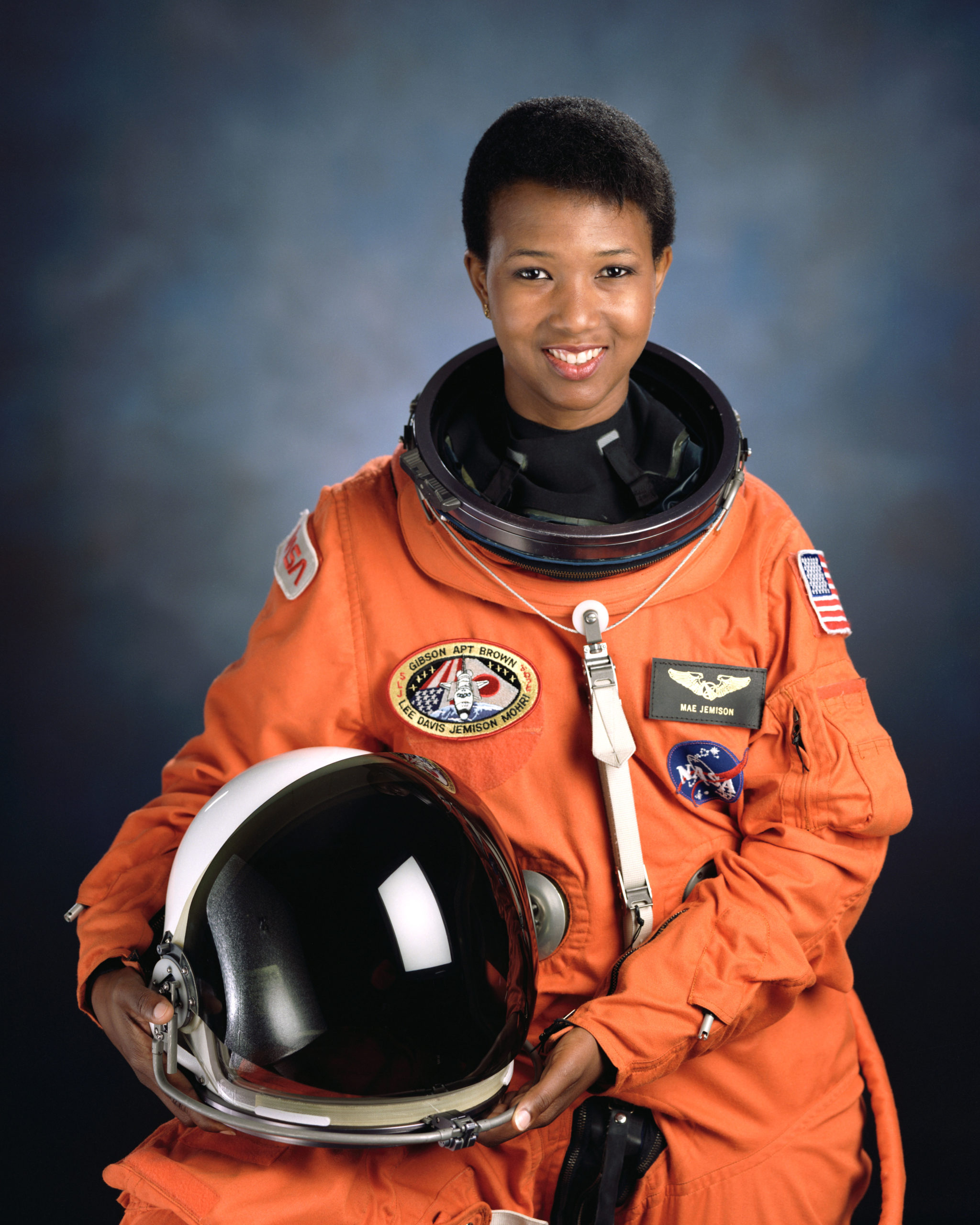Feature1 by Brandy Schillace

It’s true that doctors wear many hats. Mae Jemison also wore a space suit. In today’s feature, we honor Mae Jemison, an American engineer, physician, and NASA astronaut.
Jemison attended Cornell Medical School, after receiving her degree in chemical engineering. During her years at Cornell, she worked at a Cambodian refugee camp and also traveled to Cuba. She graduated in 1981 and interned at LA County Medical before joining the Peace Corps and serving in private practice. Jemison ultimately worked with the Center for Disease Control, assisting in vaccine research, and even helped produce the hepatitis B vaccine.
In addition to her incredible work in science, medicine, and technology, Jemison deeply appreciates the humanities. She also took lessons in modern dance at the Alvin Ailey school, writing that “Many people do not see a connection between science and dance, but I consider them both to be expressions of the boundless creativity that people have to share with one another.”2
Inspired by Sally Ride, she would go on to become the first Black woman in space, joining the crew of the Endeavor in 1992. Everything in her life, she told admirers, prepared her for this moment—being an astronaut takes all of your experiences and focuses them. She continued with NASA for six years, but left to explore how social sciences interact with technologies. “People always think of technology as something having silicon in it,” she explains. “But a pencil is technology. Any language is technology. Technology is a tool we use to accomplish a particular task and when one talks about appropriate technology in developing countries, appropriate may mean anything from fire to solar electricity.”3
In 2010, Jemison narrated a program called Race and the Space Race, describing how the Civil Rights movement and NASA came of age around the same time. Having faced racial discrimination (and sex discrimination, too) in her school years as well as her later twin careers, Jemison focuses her work on encouraging and supporting minorities.4,5 Jemison started The Jemison Group, encouraging science, technology, and social change/social justice. Jemison now leads the 100 Year Starship project through the United States Defense Advanced Research Projects Agency (DARPA). And yes. She is also the first real astronaut to appear on Star Trek, Next Generation, in an episode called Second Chances. “You have as much right as anyone else to be in this world and to be in any profession you want,” writes Jemison. “You don’t have to wait for permission.”6
Sources:
[1] “Mae C. Jemison.” Biography, 6 January 2021 <https://www.biography.com/astronaut/mae-c-jemison>.
[2] “Mae Jemison.” United Against Racism—New Mexico, 3 April 2020 <https://unitedagainstracismnm.wordpress.com/2019/02/27/mae-jemison/>.
[3] “Mae Jemison.” United Against Racism—New Mexico, 3 April 2020 <https://unitedagainstracismnm.wordpress.com/2019/02/27/mae-jemison/>.
[4] Alexander, Kerri Lee. “Mae Jemison.” National Women’s History Museum, 2019 <https://www.womenshistory.org/education-resources/biographies/mae-jemison>.
[5] Reichhardt, Tony. “Race and the Space Race.” Air & Space, 25 February 2010 <https://www.airspacemag.com/daily-planet/race-and-the-space-race-131432485/>.
[6] Alexander, Kerri Lee. “Mae Jemison.” National Women’s History Museum, 2019 <https://www.womenshistory.org/education-resources/biographies/mae-jemison>.